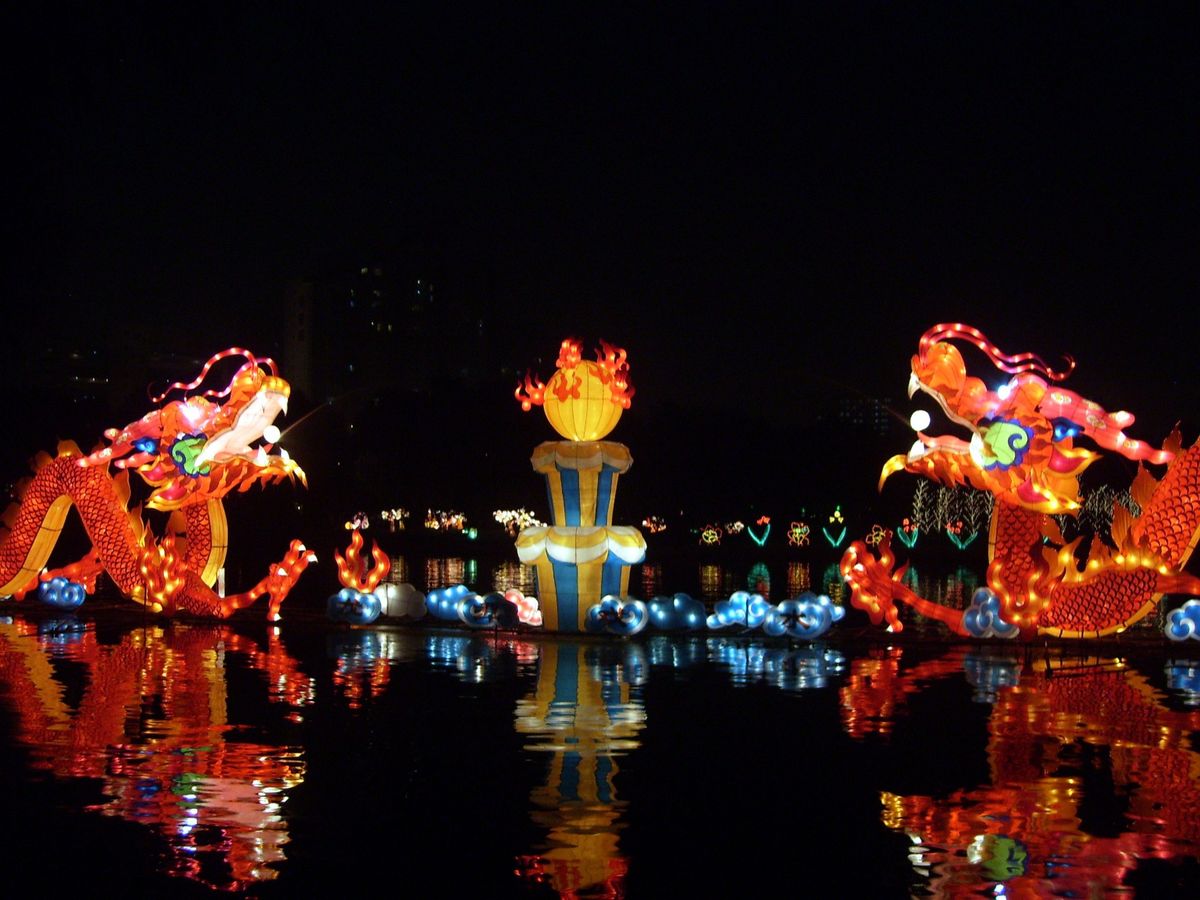What do you need to know about the Mid-Autumn Festival?

A few minutes every morning is all you need.
Stay up to date on the world's Headlines and Human Stories. It's fun, it's factual, it's fluff-free.
The Mid-Autumn Festival is a big deal. This autumn, Hong Kong is preparing for the festival by adorning spaces with Mid-Autumn Festival lanterns and selling boxes of mooncakes by the armful.
The Mid-Autumn Festival in Chinese is 中秋节 Zhōngqiūjié, and it’s also known as the “moon festival" or the “lantern festival." One of the crucial Chinese festivals, it’s celebrated on the 15th day of the eighth lunar month. This year, the festival falls on September 21, the day when the moon will be at its fullest and shine the brightest. The Mid-Autumn Festival is a time when people get together while colorful lights illuminate the city.
The moon festival story of Hou Yi and Chang’e
The Mid-Autumn Festival in Chinese culture is associated with an ancient legend about the goddess of the moon, Chang’e. The moon festival story begins a long time ago, when Chang’e’s archer husband Hou Yi shot down nine of 10 suns to protect the Earth from devastating heat causing droughts and hardships in the world. As a reward for his heroic actions, he received an Elixir of Immortality from the gods. This elixir would grant him immortality so he could stay with his wife Chang’e forever.
However, Hou Yi’s greedy student Feng Meng wanted to steal the elixir. So Chang’e drank the potion to protect the elixir, as she knew she couldn’t fight Feng Meng. This caused her to ascend to the moon and became the immortal Moon Goddess. To keep her company, the gods sent The Jade Rabbit to the Moon Palace. Hou Yi prepared a yearly feast on the fullest day of the moon, hoping to see his wife again.
Chang’e and Hou Yi’s love story is well-known and widely appreciated by Chinese people. So, the Mid-Autumn Festival is celebrated to worship the moon as a way to show gratitude and commemorate the moon goddess. The Jade Rabbit is also a symbolic Mid-Autumn Festival mascot that appears in many decorations around the city.
How is the Mid-Autumn Festival celebrated in Hong Kong?
On the day of the Mid-Autumn Festival, Chinese families come together through big family feasts and gatherings to give thanks to the goddess of the moon. With the moon at its brightest and fullest, families often go to parks and set up small picnics for the best moon-gazing while enjoying mooncakes and the popular festival fruits, star fruit and pomelo.
It is not uncommon to see hundreds of people gathered with their families or friends in parks across Hong Kong’s districts on this day. Despite the pandemic, families still try to come out and enjoy the spirits of the festival as safely as possible.
During pre-COVID times, the Tai O Water Village Lantern Festival was a must-visit. The illumination of the village using about 2,500 handmade lanterns is a hugely popular attraction. However, due to COVID-19 restrictions and overwhelming crowds affecting the daily activities of residents in Tai O in the past few days, the organizers decided to halt the usual festivities.
Another pre-COVID annual tradition was the Tai Hang Fire Dragon Dance in Tai Hang. The highlight of the dragon show is a fire dragon made of hemp rope and pearl straw with more than 72,000 incense sticks over its body. The dragon, carried by around 300 performers, commemorates Tai Hang’s victory in the old days when they used an incense-covered straw dragon to chase off evil spirits and bring prosperity to the village.
This year, large installations are on display in Victoria Park, Sha Tin Park, and Tin Shui Wai Park. These lantern installations include glitzy Mid-Autumn Festival lanterns of all shapes and sizes and are perfect for festival pictures.
Lanterns and glow sticks
The lantern festival is especially popular among children, who enjoy playing with traditional paper lanterns as well as modern plastic lanterns and glow sticks. Lanterns come in various forms – from traditional lanterns made of paper or silk with bamboo stick frames and a small lit candle inside to modern (often safer) options like plastic lanterns with battery-operated lamps and speakers inside. The latter can also come styled after cartoons of The Jade Rabbit, Pikachu or even characters from Marvel’s “The Avengers.”
Another thing you’ll see a lot of during the Mid-Autumn Festival are glow sticks. Children and young adults often make different accessories out of glow sticks and throw circular-shaped sticks onto tree branches. Although it’s pretty illuminating the trees with colorful lights, this practice has become less popular over the years due to waste and environmental damage. Also, glow sticks have waned in popularity due to chemicals inside that can be harmful to children. We love to keep the environment safe; therefore, we recommend enjoying a waste-less and safe Mid-Autumn Festival instead.
So, what are mooncakes?
Mooncakes are an inevitable part of the Mid-Autumn Festival. One of the most iconic traditions of the Mid-Autumn Festival, mooncakes have come a long way these days in terms of flavors. From traditional egg yolk mooncakes found in almost every bakery to modern variations, including mango, taro, chocolate and the crowd-favorite matcha-flavored mooncake.
Some bakeries and restaurants offer unconventional and innovative mooncakes like Hotel Icon’s Musang King Durian Mousse mooncake, Chilli Fagara’s chili chocolate mochi mooncake and even CBD-infused mooncakes from Hong Kong CBD cafe Found.
The Mid-Autumn Festival is when the spirit of togetherness and unity finds the people of Hong Kong. It’s is a precious time for families and friends to be together despite the hustle and bustle of everyday city life.
This year, the festival is also closing the distance and gaps between family and friends that arose from the pandemic, allowing people to nurture important bonds and relationships by reconnecting with each other. We hope to see you there.
Have a tip or story? Get in touch with our reporters at tips@themilsource.com




Comments ()